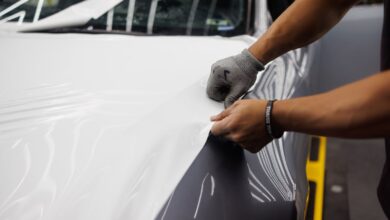How to Prepare for Your First Driving Lesson- 2024 Guide

The first driving lesson in life is an exciting experience, and no one can take that away from you. There is something challenging throughout the whole process, and one of the main reasons why young people are excited is that they can feel like they are already adult and responsible, when they sit behind the wheel. Also, when you sign up for the course, you will be assigned with a driving instructor, who will teach you what you need to do, so you can become a good driver. According to aDriving, not every candidate is the same, and it’s always a good idea for the instructors to come out with some practical techniques and tricks, so they can teach them how to drive.
At the same time, the first lesson can be pretty stressful too, and the candidates are often coping with fear too, especially if they have never been in the driver’s seat before. So, the instructor also has an important role, while explaining why there isn’t anything scary in the driving lessons. They need to calm down the excitement and teach the person to be focused on what’s happening in the car, and on the road.
As a candidate, you probably think about getting prepared for the big day, but the truth is that you don’t need to do anything special. You just need to get some sleep and stay focused on the new things you will learn right after you meet the instructor. Here are some of them:
1. Get some rest

Go to bed earlier than usual the night before the first class. You need to be focused, and tiredness won’t help you with that. The excitement may cause some stomach reactions, so it’s better for you to have a light breakfast before you leave your home, but we recommend you avoid drinking coffee because the caffeine doesn’t go well with the positively upset body. But, surely you can take a bottle of water with you because you will get thirsty, and refreshing during the break is always a good idea.
So, don’t go out the night before, stay calm, sleep well, and wake up the same day relaxed and completely ready to accept the new challenges the day brings to you.
2. Don’t drink alcohol before driving
We don’t even need to explain why it’s wrong on so many levels, even though you may think it will help you to relax.
One of the most important things you probably know already is that you should never drive, even when you took only a drop of alcohol. It’s too risky for your life, and you are putting all the other drivers at risk, because you behave improperly, and you are dangerous for the rest of the people.
3. If it’s overwhelming, then talk about it

This is a unique experience, and if you feel like you need to talk about it, then do that. You can share your fears and excitement with your friends, or ask your parents for advice. It’s always better to talk before you hit the road, then to let the stress and anxiety overwhelm you.
The subjective feeling of stress, anxiety, and many other mixed emotions can be really overwhelming, and it’s always good to share what you feel with someone you trust. Keeping it in yourself can only worsen the situation, and you won’t be focused enough, and that’s not good for your first time in the car.
4. Choose comfortable shoes
In the beginning, you can wear lightweight shoes, with a thin and adaptable sole. You need to learn how much pressure is enough when you hit the pedals, and thick models won’t let you do that. Avoid slippers and high heels. Later in your life, you will anyway learn how to drive while wearing any type of shoes, but until then, you need to exactly know what you do with your feet.
5. Wear your glasses or contacts

If you have problems with your vision, you must take your glasses or contact lenses, and wear them all the time. In the past, some people were hiding these conditions, but it’s always better to wear the glasses while you drive, instead of getting into an unpleasant situation or accident because you haven’t seen the danger coming.
6. Prepare a list of questions
You probably have a long list of questions, and it’s always better to write them down, so you won’t forget anything. The driving instructor is also trained to answer theoretical questions too, and they are here to help you with any confusion or struggle, and then determine if you are ready to drive, or you need more basic lessons.
7. Try the car

Sit on the seat. Adjust it following your body features. Then, check the visibility in front of you, but also behind you, using the rear-view mirrors. Touch the wheel, turn on the radio, and so on. You need to feel the car, to hear how it works, and check if you understand what all those buttons and switches do. Once you do this, you can say you know what’s happening, and that you are ready to start with the first lessons.
8. After the lesson
Once you were in the car, you will be again excited, and you will probably need to talk about it a lot. Share your experience with your friends, and spend enough time with your parents, so they can give you some advice. Remember, you can’t learn how to drive in the first class, but you surely will get to know the whole process better, and see if you want to be a driver, or not.
This guide will give you some basic instructions on what you need to do when you sign up for the driving courses. You only need to follow our advice, get ready, and don’t let the stress and fear overshadow your knowledge and talents. Sleep well, drink enough water, and never consume alcohol before you get in the car – and yes, it’s that simple.




